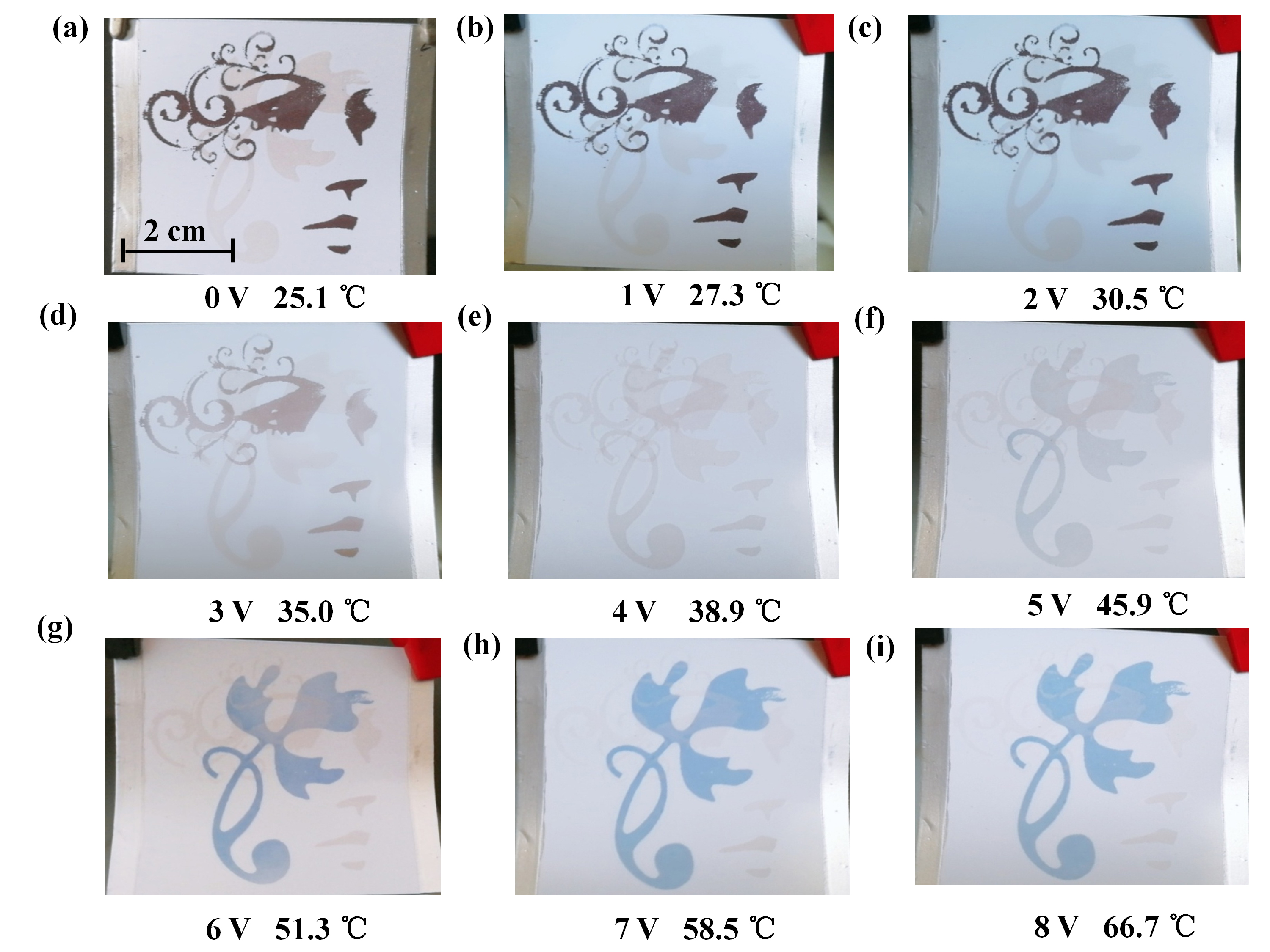| Mar 09, 2023 |
Novel silver nanowire transparent heating films
(Nanowerk News) There are many sputtered metal film heaters on the market, but they are opaque and can only be used on the back of the anti-counterfeiting label. In addition, the heating rate is slow and the bending resistance is usually poor.
|
|
A research team led by Prof. JI Shulin from the Hefei Institutes of Physical Science of the Chinese Academy of Sciences came up with a solution. They developed a novel transparent heating film made of silver nanowires that can be used to fabricate a paper-based silver nanowire film heater. Its film resistance is much lower than that of indium tin oxide.
|
 |
| Vivid exhibition of high resolution pattern changes during multiple thermochromic processes: (a-i) photos of the display sample under the ever-increasing voltage of 0-8 V with gradually enhanced heater temperature. (Image: JI Shulin)
|
|
Under the low voltage of a micro battery, rapid temperature change would be realized. Combined with thermochromic inks of different discoloration temperatures and discoloration directions, the film would achieve an intelligent anti-counterfeiting discoloration effect.
|
|
Prof. JI, who has been working on this project for years and now expects this mature technology to be marketed commercially, gave a clearer introduction to the new system.
|
|
The heating system is based on the percolative heat exchange of silver nanowires; the film is optically transparent and does not interfere with high-definition display on paper, plastic and other substrates.
|
|
Physicists print multiple and overlapping high-resolution thermochromic patterns onto the substrate. The corresponding spatial position of each pattern and the discoloration directions of thermochromic inks, as well as the discoloration temperatures, are different.
|
|
The heat exchange coefficient between the heater and the thermochromic object is adjusted by manipulating the percolation structure of the silver nanowire film, and the transformation type and speed of the thermochromic patterns can be controlled by the accurate spatio-temporal response of temperature under a series of set voltages.
|
|
Since the combination of discoloration temperature and direction is unknown, simply application of friction heat or fire discoloration by imitators cannot show the required discoloration switch. In this way, the real intelligent anti-counterfeiting or complex display effect can be realized.
|
|
At the same time, thanks to the high optical transmittance of the invisible heater, the heater and the discoloration pattern are located on the same side of the substrate, avoiding the slow heat exchange across the substrate and heat capacity loss. As a result, low power consumption can be achieved under the built-in micro battery drive.
|
|
This heating technology is used to drive the complex changes of multiple groups of high-resolution thermochromic patterns to achieve high-end visual requirements.
|
|
This intelligent discoloration technology has overcome the limitations of electrochromic, photochromic, hydrochromic and pressure-sensitive discoloration technology. It's expected to be applied in the fields of anti-counterfeiting, secrecy, intelligent display, etc.
|

